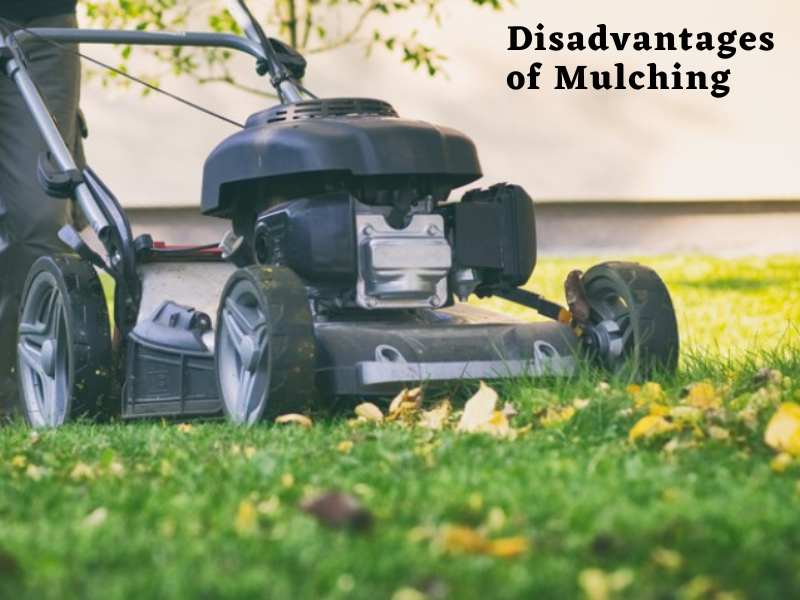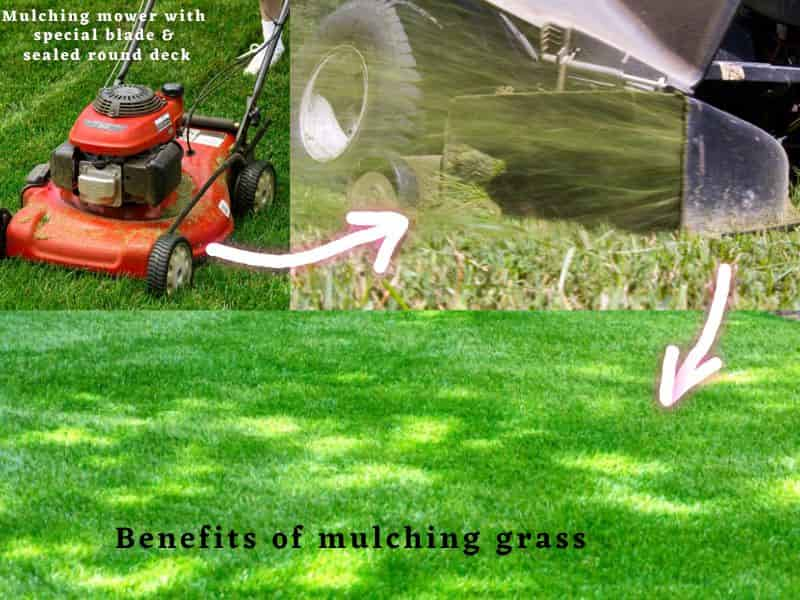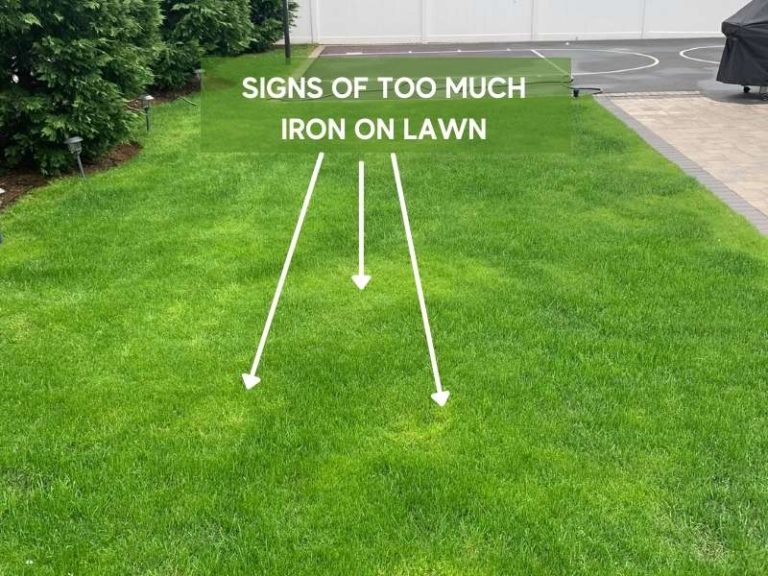Disadvantages of Mulching Grass (Best Way to Mulch)
Mulching is a lawn maintenance activity whereby you cover the soil with grass clippings, leaves, and other organic materials. Proper mulching is beneficial; it provides nutrients, improves soil quality, and protects the grass from extreme temperatures. While mulching is preferred to bagging the clippings, it’s not always beneficial for your lawn. But what are the disadvantages of mulching grass?
Mulching increases lawn maintenance, creates a conducive environment for harmful insects and pests, starves water, air, and light of the soil, and encourages the spread of weeds and diseases. Mulching with certain inorganic materials can also deprive the soil of key nutrients.
Mulching, when done properly, has its good sides. Here I’ll look at both benefits and demerits of mulching grass.
Contents
What are the disadvantages of mulching?
Although mulching benefits your lawn, it also brings about issues that should not be ignored. Depending on the lawn type, the climate, and the mulching materials, the following are the factors to consider;

Here are 6 disadvantages that might influence your decision to mulch.
Increased maintenance
Here you have two possible problems. You must frequently mow to have a manicured lawn if you have fast-growing grass. Additionally, you have to get a lawn mower that can handle the work capacity you put it through. Large lawns also increase labor costs both in gas and manpower.
Mulch also takes nutrients from the soil
Mulch provides a great environment for microbes. These microbes take up some of the nutrients in the soil. The grass competes with microbes for key nutrients if the soil is not well prepared for mulching. And if microbes reproduce fast enough in nutrient-deficient soil, your lawn becomes deprived.
However, there is a solution; Add nitrogen-rich fertilizer to the soil if you use only organic mulch in nutrient-deficient soil. Alternatively, mix the mulch with inorganic mulch, such as wet shredded newspaper clippings.
Avoid any harsh chemicals that can stunt the grass’ growth.
Mulching increases weed and pests infestation
Mulching a lawn that has weeds will encourage the spreading of those weeds unless you remove them before mulching, weeds such as crabgrass, dandelion, daisies, and other lawn weeds. When you spread the grass with the weeds, the weeds will also extend the spores of the weeds. The best option is to remove them before mulching. So, should I bag grass clippings if I have weeds?
Too much inorganic mulch can create rooting at the roots, which will encourage pests and diseases. If you lay the mulch too thick, it can attract mold and bugs. Also, insects will naturally come because of the high moisture content, especially in shaded areas.
Mulching prevents water from reaching the roots
Mulch creates a barrier for water and light to reach the grass. Mulching does not allow rain or hose water directly into the soil because it creates a barrier. If you mulch your lawn, it is harder for the water to penetrate the roots. Water is essential for root development. The mulch dries out the soil. Also, applying too much mulch can starve the soil of oxygen. Some synthetic mulches, like plastic bags, do not let air or water in.
Mulching creates a messy lawn
Mulching makes the lawn look messy. Leaves, barks, and grass clippings don’t leave a neat look on the lawn. Leaves also stick on the feet, especially during the wet season.
Mulching during the wet season or after rain will make the clippings form clumps. The clumps are detrimental to the health of the lawn because they create dead patches and prevent sunlight from reaching the grass. It is also better to do mulching during summer or spring when the decomposition rate is high.
Bulky mulches are detrimental to the lawn
Mulching with bulky materials will smother the grass and become weak and thin. Leaves and other bulky materials like bark cover larger areas and thus prevent the sunlight from reaching the grass blades. Sunlight is very vital for the growth and health of turfgrass. Lack of sunlight stunts the development of the grass and can cause a loss of color and ultimately end up with an unattractive lawn.
In lawns with repeated use of synthetic fertilizers and pesticides, decomposition may be reduced to break down the clippings. Synthetic fertilizers increase salt in the soils, reducing microbial activity for decay. Insecticides and pesticides, on the other hand, kill pests and earthworms vital for organic mulch breakdown.
Is mulching good or bad for the lawn?
As a vital activity for your lawn, it’s hard to lean to one side when it comes to mulching. Responsible and timely mulching is great for your lawn. It releases nitrogen, phosphorus, and potassium on your lawn. However, leaving the grass to overgrow before mowing leads to thatch buildup when you mulch with the clippings. And you don’t want that.
It is essential to mulch newly planted grass to protect the root until it develops. The exposed areas should be covered with about 1-3 inches of mulch.
Mulching needs proper preparation. That means the right mulch needs to be easy to apply, water-conservative, readily available, and economical in terms of labor and other costs. You also need the proper pre-mulch treatment chemicals to treat the lawn. That way, you avoid weeds and pests festering under the surface of your mulch.
You can mulch your lawn with either organic or inorganic mulch. Organic mulch consists of substances that will decompose into the soil. These substances include grass clippings, straw, shredded or chopped bark, and leaves.
Inorganic mulch, on the other hand, doesn’t decompose and doesn’t offer nutritional value to your lawn. The most common inorganic lawn mulches include landscape fabric, black plastic, stone, or gravel.
The best mulch for the lawn is grass clippings or shredded leaves since they are readily available, decompose faster, and are not bulky. Most times, mulching with grass clippings is the best option because it comes right after mowing.
What are the advantages of mulching?
Mulching is best done in spring and summer and has numerous benefits in establishing a lush lawn. It’s best to get a mower specifically made for mulching or one with a mulching feature. The mulching mower has a specially-shaped blade to keep grass clips moving around the blade. The mower deck is round and sealed to provide enough space to let grass clips stay within the decks and around the blade.

The following benefits arise when using the right tool and mulching at the right time.
Mulch helps retain moisture in the lawn
You’ll likely get the best results from mulching with grass if you live in hot regions. Heat scorches the ground, consequently evaporating the moisture in the soil. You either end up with a dry, brown lawn or a struggling artificial watering system. However, mulching retains moisture and promotes healthy growth for your grass. Infact, mulching with mowed grass clipping (which is 80% water) will reduce water needs for your grass lawn.
Mulching is an inexpensive
Mulching uses a readily available resource, grass. You might need a lawn mower to mow the lawn for the clippings. If you already have a lawn mower, your costs only go as far as gas for the machine. But where do you dump grass clippings? Mulching also helps to reduce expenses incurred to dispose of grass clippings in areas without landfill.
Mulching safely adds nutrients to your lawn
Eventually, the organic matter used for mulching decomposes. Any nutrients in the mulch go right back into the soil and benefit the lawn. Organic mulch contains growth-critical nutrients, so you won’t have to supplement with inorganic fertilizers.
Mulching reduces waste
Looking into bagging vs. mulching, the latter is an eco-conscious step that improves your lawn’s visual appeal without increasing plastic waste. Granted, you’re only doing it when you mow; you’re sure you’re not filling landfills with plastic bags.
Mulching Tips
Here are the guidelines that you should follow;
- Use a powerful mower if you prefer mulching with grass clippings. You should use mulching lawnmowers or mowers with mulching plugs or attachments. You can use typical mowers but cut the grass regularly to give you small clippings.
Not all mowers are suited for mulching, so you should use a suitable one. Maintain your equipment and ensure the mower blades are sharpened.
- Mulch in the summer and fall months when the clippings will dry to reduce the chances of clumping. You should also not mix old mulch with new mulch.
- Mulching must be done with partially rooted material or in the first stages of decomposition. Using fresh materials like grass clippings will cause nitrogen to be taken from the soil and damage the grass.
- Mow the grass frequently, and ensure you don’t mow more than a third of the grass. If you mow long grass, the clippings will be long and clump like a ball.
The grass clippings should be an inch or less in length. Longer grass clippings should be removed to reduce the chances of lawn damage. You should not mow wet or too long grass in the wild.
Mulching does not always live up to the hype. Still, it’s responsible for knowing whether or not you can mulch. Contact the County Extension Office for assistance on mulching conditions depending on turfgrass type, weather, and the region.


